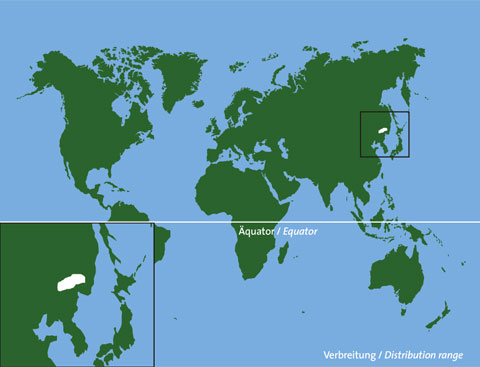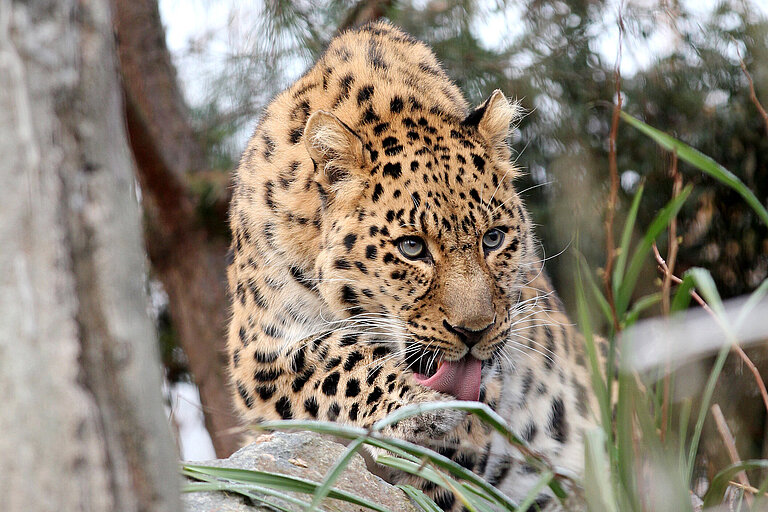Did you know?
It is estimated that only ca. 100 Amurleopards remain in the wild. In zoos there are still more than 200. Of all the leopards, their distribution range is the furthest North-East. To adapt to the climatic conditions of their habitat, they have a very thick, long-haired fur. Their winter pelt is particularly thick with ca. 3,000 hairs per cm2. The rosettes on this pelt are relatively large compared to other leopard subspecies.
European Endangered species Program
This animal is managed by the European Association of Zoos and Aquaria (EAZA) under the European Endangered species Program.

Characteristics
| Classification | Order: carnivores, family: felids; one of the 24 leopard sub-species described |
|---|---|
| Diet | Small to medium-sized mammals, partly also wild boars, roe and sika deer, birds and reptiles |
| Habitat | Taiga in the East of Siberia close to the Chinese border |
| Reproduction | Outside the breeding season all leopard species are solitary. After a gestation period of 90–105 days 1–3 (or on rare occasions more) cubs are born that stay with their mother until they have learnt to hunt. |
Status according to Red List
More information you will get on the web page of the IUCN Red List.









